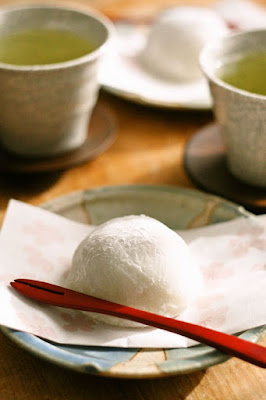I found young
ginger (also known as spring ginger) at the store other day and decided to make
this ginger rice. Spring ginger is a fall crop imported from countries south of
the Equator. Young ginger has the same shape as regular ginger but is milder
and tenderer.
Ginger Rice
·
3 rice
cups of short grain rice (1 rice cup=180cc)
·
3
ounces of young ginger (use half of the amount for regular ginger)
·
1 piece
of “Aburaage” (deep fried tofu skin)
·
500cc
of dashi broth (use salt-free, additive-free for powdered dashi stock)
·
3 tablespoons
of light soy sauce
·
2 tablespoons
of Japanese sake
·
2 tablespoons
of mirin (Japanese sweet wine)
·
a pinch
of salt
Tips: If you are
using rice cooker, add seasonings first, then add dashi broth up to the line
for 3 cups of rice. Cook normally after that.
1.
Rinse
the rice in a bowl few times with cold water and drain well in a colander.
2.
Rub off
the skin of the young ginger using the edge of a spoon and mince it. Pour
hot water over the “Aburaage” to remove excessive oil. Mince the “Aburaage”.
3.
In a
pot, mix the rice, dashi broth, light soy sauce, sake, and mirin. Stir once. Add
minced ginger and “Aburaage” on top. If you have time, let the rice soak for a
little to make the rice fluffier.
4.
Cook
over high heat with a lid on. Approximately 30 seconds after steam comes out,
turn the heat down to low and cook for an additional 11 to 12 minutes.
5.
Turn
the heat up to high for the last 20 seconds.
6.
Allow
the rice to settle for about 10 minutes with the lid on. Mix the rice then
serve.




























